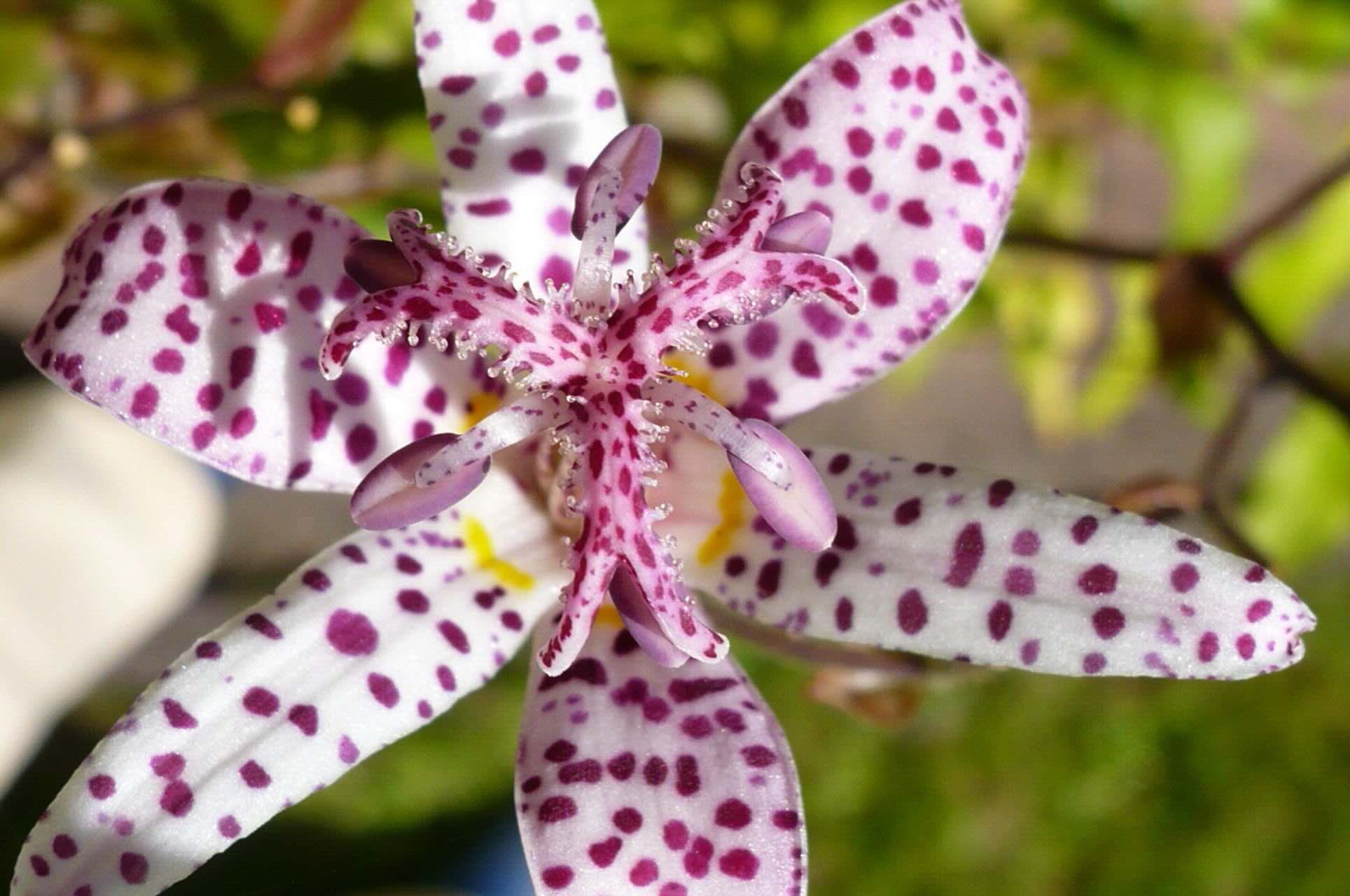
Tricyrtis, commonly known as toad lilies, are fascinating plants that add a touch of exotic beauty to gardens. These perennials, native to Asia, thrive in shady spots and bloom in late summer to fall. Did you know that their unique, orchid-like flowers can come in various colors, including white, pink, and purple? Toad lilies are not just pretty faces; they are also hardy and can withstand cold temperatures. Interestingly, their name comes from the Greek words "tri" (three) and "kyrtos" (humped), referring to the three-lobed shape of their flowers. Want to know more about these intriguing plants? Keep reading to uncover 35 amazing facts about Tricyrtis that will make you appreciate them even more!
What is Tricyrtis?
Tricyrtis, commonly known as toad lilies, are fascinating plants that captivate gardeners with their unique appearance and resilience. These perennials are native to Asia, particularly Japan, China, and the Himalayas. Let's dive into some intriguing facts about these remarkable plants.
- Tricyrtis flowers resemble orchids with their intricate patterns and delicate petals.
- The name "toad lily" comes from the spotted appearance of the flowers, which some say resemble a toad's skin.
- These plants thrive in shady, woodland environments, making them perfect for gardens with limited sunlight.
- Tricyrtis blooms in late summer to early fall, providing color when many other plants have finished flowering.
- The flowers are typically white, pink, or purple, often with contrasting spots or streaks.
- Tricyrtis plants can grow up to 3 feet tall, depending on the species and growing conditions.
- They prefer moist, well-drained soil rich in organic matter.
- These plants are relatively low-maintenance, requiring minimal pruning and care.
- Tricyrtis are hardy in USDA zones 4-9, making them suitable for a wide range of climates.
- They can be propagated by division, seeds, or stem cuttings.
Unique Features of Tricyrtis
Tricyrtis plants boast several unique features that set them apart from other perennials. Their unusual flowers and adaptability make them a favorite among gardeners.
- The flowers have six tepals, which are a combination of petals and sepals.
- Some species have hairy stems and leaves, adding to their distinctive appearance.
- Tricyrtis flowers are often star-shaped, with a central cluster of stamens.
- The leaves are typically lance-shaped and arranged alternately along the stem.
- Some species produce small, bulb-like structures called bulbils in the leaf axils.
- The flowers are usually unscented, focusing their energy on visual appeal rather than fragrance.
- Tricyrtis plants can tolerate a range of soil pH levels, from slightly acidic to neutral.
- They are resistant to many common pests and diseases, making them a resilient choice for gardens.
- The plants can form dense clumps over time, creating a lush, ground-covering effect.
- Tricyrtis flowers attract pollinators like bees and butterflies, contributing to a healthy garden ecosystem.
Growing and Caring for Tricyrtis
Toad lilies are relatively easy to grow and care for, making them an excellent choice for both novice and experienced gardeners. Here are some tips to help your Tricyrtis thrive.
- Plant Tricyrtis in a location with partial to full shade to protect them from harsh sunlight.
- Ensure the soil is consistently moist but well-drained to prevent root rot.
- Mulch around the base of the plants to retain moisture and suppress weeds.
- Fertilize with a balanced, slow-release fertilizer in the spring to promote healthy growth.
- Water regularly, especially during dry periods, to keep the soil evenly moist.
- Divide the plants every few years to maintain their vigor and prevent overcrowding.
- Remove spent flowers to encourage continuous blooming and maintain a tidy appearance.
- Protect the plants from slugs and snails, which can damage the foliage.
- In colder climates, apply a layer of mulch in the fall to insulate the roots during winter.
- Tricyrtis can be grown in containers, making them a versatile option for small gardens or patios.
Interesting Facts About Tricyrtis
Beyond their beauty and resilience, Tricyrtis plants have some fascinating characteristics that make them even more intriguing.
- The genus name "Tricyrtis" comes from the Greek words "tri" (three) and "kyrtos" (humped), referring to the three swollen nectaries at the base of the flower.
- In Japan, Tricyrtis is known as "Hototogisu," named after a bird whose spotted plumage resembles the flowers.
- Some species of Tricyrtis are used in traditional medicine for their purported healing properties.
- The plants have been cultivated in gardens for centuries, particularly in Japan and China.
- Tricyrtis flowers are often used in floral arrangements due to their unique appearance and long-lasting blooms.
The Final Bloom
Tricyrtis, or toad lilies, are more than just pretty flowers. They bring a touch of the exotic to gardens with their unique spotted petals and star-shaped blooms. These plants thrive in shady spots, making them perfect for areas where other flowers might struggle. They’re also low-maintenance, needing just a bit of water and some well-drained soil to flourish.
Beyond their beauty, toad lilies have a fascinating history and a variety of uses in traditional medicine. They’re not just eye candy; they’re a testament to nature’s diversity and resilience. Whether you’re a seasoned gardener or a newbie, adding Tricyrtis to your garden can be a rewarding experience.
So, next time you’re looking to add some flair to your garden, consider these remarkable plants. They’re sure to impress with their unusual charm and hardy nature.
Was this page helpful?
Our commitment to delivering trustworthy and engaging content is at the heart of what we do. Each fact on our site is contributed by real users like you, bringing a wealth of diverse insights and information. To ensure the highest standards of accuracy and reliability, our dedicated editors meticulously review each submission. This process guarantees that the facts we share are not only fascinating but also credible. Trust in our commitment to quality and authenticity as you explore and learn with us.
